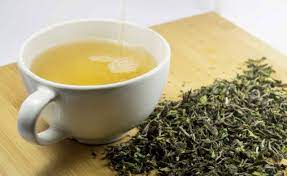
by Kadambari Ingle
- Uncategorized
If you are a tea connoisseur, you might be aware of what a treasure first flush tea is. However, people who simply enjoy a good cup of tea without knowing in-depth information would be surprised by the value of first flush tea. Among numerous flavors and blends, what is the first flush tea? And why is it so cherished among tea lovers? Keep reading to understand the importance and requirements of tasting first flush tea from premium tea brands in India.
What is First Flush Tea?
The first flush tea refers to the first tea harvested during spring or in the late winter. The time for the first flush may vary depending on the region and type of tea, and farming methods. In most cases, the first flush costs more than other teas as it has the best quality.
Therefore, first flush tea brings a great deal of excitement among tea lovers because they are aware of the authenticity and flavor it brings to the cup. The first flush tea is oxidized slightly for ensuring its fresh flavor to enrich.
Based on the flush, teas include distinct characters in terms of taste and appearance. The first flush has a lighter appearance in both the leaves and brewed tea. The leaves of the first flush are considerably green and might even be mistaken for green tea. As the tea is poured into the cup, the beverage appears pale, ranging from a light golden hue to amber.
When it comes to appearance, the first flush tea consists of flavors, including fruity, floral, grassy, and earthy notes. Similar to green teas, the first flush teas are steeped at 80C for approximately 3 minutes. 10 gm of tea is used for 10 oz of water to get the best results.
The Difference between First Flush and Second Flush:
The first flush tea generally includes more nutrients, antioxidants, and caffeine. On the other hand, second flush tea leaves have less time to grow. However, it grows faster because of weather conditions, unlike the spring ones with a whole winter to rest and grow gradually. First flush teas are usually hand-picked than teas from later growing seasons.
In the case of green tea, the first flush is always considered to be the best one. The same is the case with white and oolong teas. However, Darjeeling teas make things more complex. Contrary to teas from other countries, there is a strong debate regarding which flush is the ideal.
Darjeeling teas are less oxidized compared to other black teas, and therefore, freshness is an important factor. In the case of Assam tea, the second flush is preferred over the first one, bull bodied with malty and rich flavor.
Why Are First Flush Expensive?
First flush teas are made through orthodox methods like rolling tea by hand. The techniques ensure multiple health benefits from tea.
Premium tea brands in India are more selective regarding tea plants to be used for first flush teas.
First flush teas are produced in less quantity. Therefore, its demand exceeds the supply.
High national and international demand from tea lovers.
An Overview of Darjeeling First Flush:
As the Darjeeling region stretches between high mountain ridges and deep mountain valleys, it leads to challenging geography and rough terrain. It is the reason Darjeeling tea is considered one of the best and expensive variations among tea lovers and tea companies in India.
Darjeeling tea is an exclusive category of tea that produces only 1% of India’s total tea output. Although it is not the largest, Darjeeling yields some of the most prized tea in the world.
As the winter is severe in the Darjeeling region, its tea bushes are dormant for many months. Based on the tea garden location, the harvest season runs from February to November, and results in several seasonal Flushes.
The First Flush includes the new two leaves and a bud in the initial spring growth of the plant by February and lasting through April. The early leaves are more delicate and tender and resultantly more light, floral, fresh, and astringent in flavor. For preserving the spring leaf flavor, First Flush Darjeeling teas are less oxidized while processing and appear more greenish than a usual black tea.
The Second Flush is picked by April and runs through May or June. It yields larger and more mature leaves with a purplish shade with silver tips or leaf buds. The leaf growth is much quicker than the early spring growth and yields a stronger, smoother flavor for the tea. Teas from the second flush are famous for their muscatel and fruity flavor.
The Monsoon Flush starts from June or July, till October and yields large leaves, brewing to a stronger color and bolder flavor. It is less complex than the previous flushes. Teas from this Flush are used for iced tea and tea bag production in tea companies in India.
The autumn flush occurs in October and November, yielding a finished tea with a rich copper-colored beverage that is rich, full, and smooth in flavor. Leaf growth slows during the period, and the tea plant sheds the last before it goes dormant in the winter.
Darjeeling First Flush Tea From Vardhaman Group Of India:
Vardhaman Group of India is one of the respected tea companies in India that serves hand-picked and authentic tea to its customers. We offer Darjeeling tea and various other tea blends and flavors in our outlets, making our brands the best tea franchise in Maharashtra.
For more details on our product, visit www.vardhaman.group
